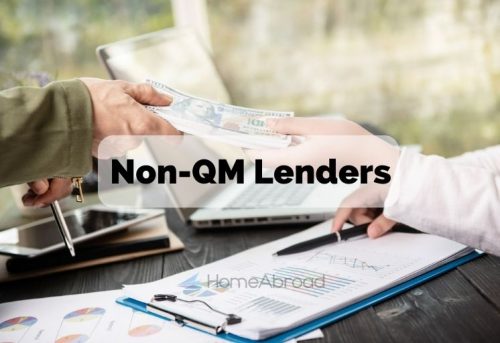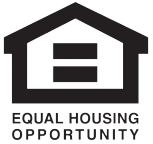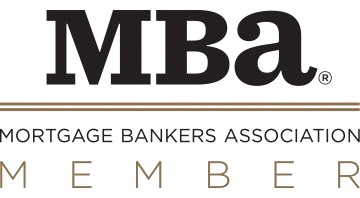Editorial Integrity
Making informed real estate decisions starts with having the right knowledge. At HomeAbroad, we offer US mortgage products for foreign nationals & investors and have a network of 500+ expert HomeAbroad real estate agents to provide the expertise you need. Our content is written by licensed mortgage experts and seasoned real estate agents who share insights from their experience, helping thousands like you. Our strict editorial process ensures you receive reliable and accurate information.
The traditional mortgage lending process can be a challenging experience for many borrowers, especially those with unique financial circumstances or credit profiles. Fortunately, the non-QM lenders have provided an alternative for borrowers who may not fit the strict guidelines of traditional lenders.
In this article, we will explore the world of non-QM lending and provide insight into how to find the best non-QM lenders.
Let’s dive into the topic to understand who are Non-QM lenders. How are they different from the QM lenders? And what are their requirements for approving the Non-QM loan?
Table of Contents
Who are Non-QM Lenders?
Non-QM lenders typically have different underwriting standards and criteria than traditional lenders who offer only qualified mortgages. Following are some standard parameters that separate non-QM lenders from QM lenders.
- They may be more flexible in their lending requirements, allowing borrowers with unique financial situations or credit issues to qualify for a mortgage.
- Non-QM loans are considered riskier for lenders. Therefore, lenders may propose higher interest rates and fees than traditional mortgages.
- It’s important for borrowers to carefully evaluate their options and compare rates and terms from multiple lenders before selecting a non-QM lender.
- Not all lenders offer non-QM loans, so borrowers may need to research to find a lender specializing in these types of mortgages. HomeAbroad can help you connect with the most trusted and experienced non-QM lenders for free!
Moving on, let’s clarify further what parameters differentiate non-QM lenders from QM lenders.
Difference Between non-QM-Lenders and QM Lenders
Here are five key differences between non-QM lenders and QM lenders:
1. Eligibility Requirements
- QM mortgage lenders must follow strict eligibility requirements set by the Consumer Financial Protection Bureau (CFPB) for qualified mortgages, including maximum debt-to-income ratios and limits on certain loan features.
- Non-QM mortgage lenders have more flexibility in their underwriting standards and may offer loans to borrowers who do not meet the requirements for qualified mortgages.
2. Loan Features
- QM loans typically have standard features, such as fixed interest rates and fully amortized payments.
- While non-QM loans may offer more flexible features, such as interest-only payments or higher debt-to-income ratios.
3. Interest Rates and Fees
- Non-QM loans are considered riskier for lenders so they may have higher interest rates and fees than QM loans.
4. Documentation Requirements
- QM lenders typically require extensive documentation to verify a borrower’s income, employment history, and other financial information.
- Non-QM lenders may be more flexible in their documentation requirements, allowing borrowers with non-traditional income or employment situations to qualify for a loan.
5. Borrower Profile
- QM loans are designed for borrowers with strong credit histories and stable incomes.
- Non-QM loans may be more suitable for borrowers with unique financial situations, such as self-employed borrowers or those with high debt-to-income ratios.
Not all lenders offer QM and non-QM loans, and the specific terms and requirements can vary widely depending on the lender and the borrower’s circumstances.
Now that we know the key differentiation between QM and Non-QM Lenders, we must learn about the various non-QM loans and how to find the right lender.
How to Find the Non-QM Lenders: Method 1
Finding the best non-qualified mortgage (non-QM) lender can be challenging, as there are many factors to consider, such as interest rates, fees, and loan terms. Here are some steps you can take to find the best non-QM lenders:
1. Do your Research
Start by researching non-QM lenders online and reading reviews from other borrowers. Look for lenders with a good reputation for customer service, transparent pricing, and fast loan processing.
2. Compare Rates and Fees
Once you have a list of potential non-QM lenders, compare their interest rates, fees, and loan terms to find the best deal. Remember that non-QM loans may come with higher interest rates and fees than qualified mortgages (QM), so be sure to factor that into your decision.
3. Check Eligibility Requirements
Ensure you meet the eligibility requirements for the non-QM lender you are considering. Some lenders may have stricter requirements than others, so it’s important to know what they are before you apply.
4. Get Pre-Approved
Before you apply for a non-QM loan, consider getting pre-approved. This can give you an idea of how much you can borrow and your interest rate and fees. It can also help you narrow down your list of potential lenders.
5. Work with an Experienced Mortgage Lender
Consider working with a mortgage lender who specializes in non-QM loans. HomeAbroad can help you find the best lenders that meet your specific needs and can guide you through the application and underwriting process.
Consider your financial situation carefully and compare loan options before choosing a non-QM lender. Choosing a lender that offers fair and transparent pricing and a good reputation for customer service is important.
How to Find the Best Non-QM Lenders: Method 2
Step 1: Get Started with HomeAbroad
HomeAbroad is a free online platform connecting borrowers with experienced lenders specializing in non-qualified mortgages (non-QM).
Step 2: Our Financial Experts Study Your Case
Our financial experts will review your case, and based on your information, our finance experts connect you with the best suitable lender.
Step 3: Talk to Lender and Accept the Terms
Once we connect with you, the lender, you talk to your lender to know the requirements, application process, and loan terms. Review the loan terms and accept. If you want another lender, we can do that as well.
Step 4: Get the Loan Estimate and Finalize
Once you find the right lender that offers you the best term, get the loan estimate and proceed with your property financing.
Loans Offered by Non-QM Lenders
1. DSCR Loans
A DSCR (Debt Service Coverage Ratio) loan is an investment property loan that evaluates the property’s cash flow to determine its ability to service debt payments.
- The required debt service coverage ratio can vary depending on the lender and the property type, but typically it should be more than 1 for a 20%-25% downpayment.
- It typically requires credit scores of 620 or more. Some lenders may also approve the loan with a lesser credit score and DSCR by charging higher down payment and interest rates.
- A higher ratio indicates that the property generates sufficient cash flow to cover the debt payments.
DSCR Loans Guide: How to Qualify for DSCR Loan?

Pre-qualify for a DSCR Loan in a Few Clicks.
No Paystubs, W2s, or Tax Returns Required.
2. Bank Statement Loans
These are loans where the borrower’s income is based on their bank statements instead of their tax returns. Self-employed borrowers or those with irregular income who have difficulty documenting their income through traditional means often use them.
- Instead of traditional income documentation, borrowers must provide bank statements for the past 12 to 24 months. The lender will use these statements to determine the borrower’s income and loan repayment ability.
- Lenders may require borrowers to have cash reserves as a sign of financial stability to get approved for a bank statement loan.

Pre-qualify for a Bank Statement Loan.
No Paystubs or W2s Required.
Get a Bank Statement Mortgage in 5 Easy Steps
Estimate your loan amount based on your bank statement income with our Bank Statement Calculator.
3. Asset-Based Loans
An asset-based loan is a type of loan that is secured by collateral, typically in the form of assets owned by the borrower.
- These assets include inventory, accounts receivable, equipment, real estate, or other tangible property that the lender considers valuable and marketable.
- The loan amount is based on the value of the collateral, and the lender typically assesses the collateral to determine the loan amount.
- This type of loan is often used by businesses needing capital but may not qualify for traditional financing.
4. No-Doc Loans
A no-doc mortgage, or a “stated income loan,” is a category of home loan that doesn’t necessitate borrowers to provide detailed documentation of their income and financial assets.
- Borrowers only need to state their income on the loan application, and the lender may verify their employment status and credit history.
- No-doc loans are easier and faster to obtain than conventional loans.
- They tend to come with higher interest rates and fees to counterbalance the higher risk to the lender.
5. Self-Employed Mortgage
A self-employed mortgage is a loan designed for self-employed individuals who do not receive a regular paycheck from an employer.
- Self-employed individuals often have difficulty qualifying for a traditional mortgage because their income can be less predictable and more difficult to verify than a salaried employee’s.

Pre-qualify for a Self-Employed Mortgage.
Get a US Home Loan with a 1099.
A Complete Guide To Self-Employment Mortgage
What Does NON-QM Lender Consider?
The eligibility requirements for non-qualified mortgage (non-QM) loans can vary depending on the specific lender and loan program. However, non-QM loans generally are designed for borrowers who may not meet the strict requirements for qualified mortgages (QM), such as those with non-traditional income, high debt-to-income (DTI) ratios, or credit issues.
Here are some factors that may be considered by lenders when determining eligibility for a non-QM loan:
1. Income
Non-QM lenders may consider different types of income, such as self-employment or investment income, that may not be accepted for QM loans. They may also allow higher debt-to-income (DTI) ratios than QM loans.
2. Credit Score
Non-QM lenders may be more flexible with credit requirements, such as offering loans to borrowers with lower credit scores than is accepted for QM loans.
3. Property Type
Non-QM loans may be available for non-owner-occupied properties or investment properties, such as investment or vacation homes, that are not eligible for QM loans.
4. Loan amount
Non-QM loans may be available for higher loan amounts than QM loans.
It’s important to note that non-QM loans may come with higher interest rates and fees than QM loans, as they are considered riskier for lenders. Therefore, borrowers should carefully consider their financial situation and compare loan options before choosing a non-QM loan.
Who Can Apply for the Non-QM Loan?
Anyone can apply for a non-qualified mortgage (non-QM) loan. However, non-QM loans are typically designed for borrowers who may not meet the strict eligibility criteria for qualified mortgages (QM).
Here are some examples of borrowers who may be eligible for non-QM loans:
1. Self-Employed Borrowers
Self-employed individuals often have non-traditional income sources that QM lenders may not accept. Non-QM lenders may be more flexible in accepting different types of income documentation, such as bank statements or business tax returns.
2. High Debt-to-Income (DTI) Borrowers
Non-QM lenders may be more flexible in their DTI requirements and may consider compensating factors, such as a high credit score or substantial assets, etc.
3. Borrowers with Irregular Income
Non-QM lenders may be more lenient with regular employment documentation and consider other factors, such as a borrower’s assets, bank statements, property’s cash flow, or savings.
4. Real Estate Investors
Non-QM loans may be available for investors who need financing for multiple investment properties, such as rental properties or vacation homes.
It’s important to note that non-QM loans may come with higher interest rates and fees than QM loans, as they are considered riskier for lenders. Borrowers should carefully consider their financial situation and compare loan options before choosing a non-QM loan.
Conclusion
Non-QM loans are a great option for borrowers with unique financial situations or needing access to larger loan amounts. The non-QM loan programs offer more flexibility and alternative documentation options, making it easier for some borrowers to qualify for financing. However, comparing loan options carefully is important before selecting a non-QM lender.
Frequently Asked Questions
What are Non-QM Lenders?
Non-QM lenders are financial institutions that offer non-qualified mortgages. These loans are not subject to the same regulations as traditional qualified mortgages, offering more flexibility regarding eligibility requirements and loan terms.
What Are The Benefits of Non-QM Loans?
The benefits of non-QM loans include alternative income documentation options, more flexible credit requirements, access to unique property types and larger loan amounts, faster processing times, and tailored loan options.
Do banks provide Non-QM loans?
No, banks usually do not provide non-QM loans. Non-QM lenders are typically private financial institutions that specialize in offering non-qualified mortgages.
What Is The Difference Between A Qualified Mortgage And A Non-QM Loan?
The eligibility requirements are the main difference between a qualified mortgage and a non-QM loan. Qualified mortgages must adhere to specific regulations, while non-QM loans are not subject to the same restrictions and can be more flexible with credit scores, income documentation, loan terms, etc.
How much must you put down on a Non-Qualified Mortgage?
The down payment requirements for a non-QM loan will vary depending on the lender and the type of loan. Generally, borrowers are expected to put down at least 20 to 25% of the purchase price against a credit score of 620.

















